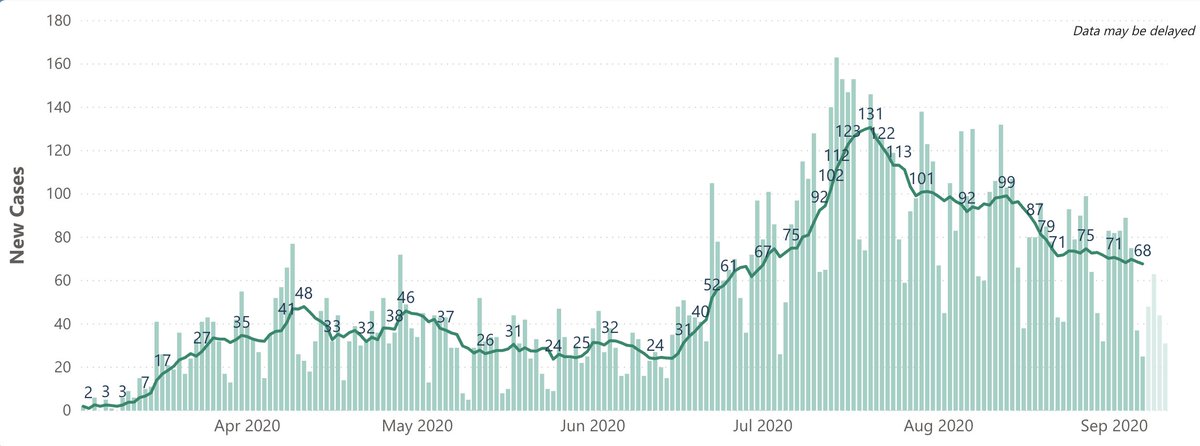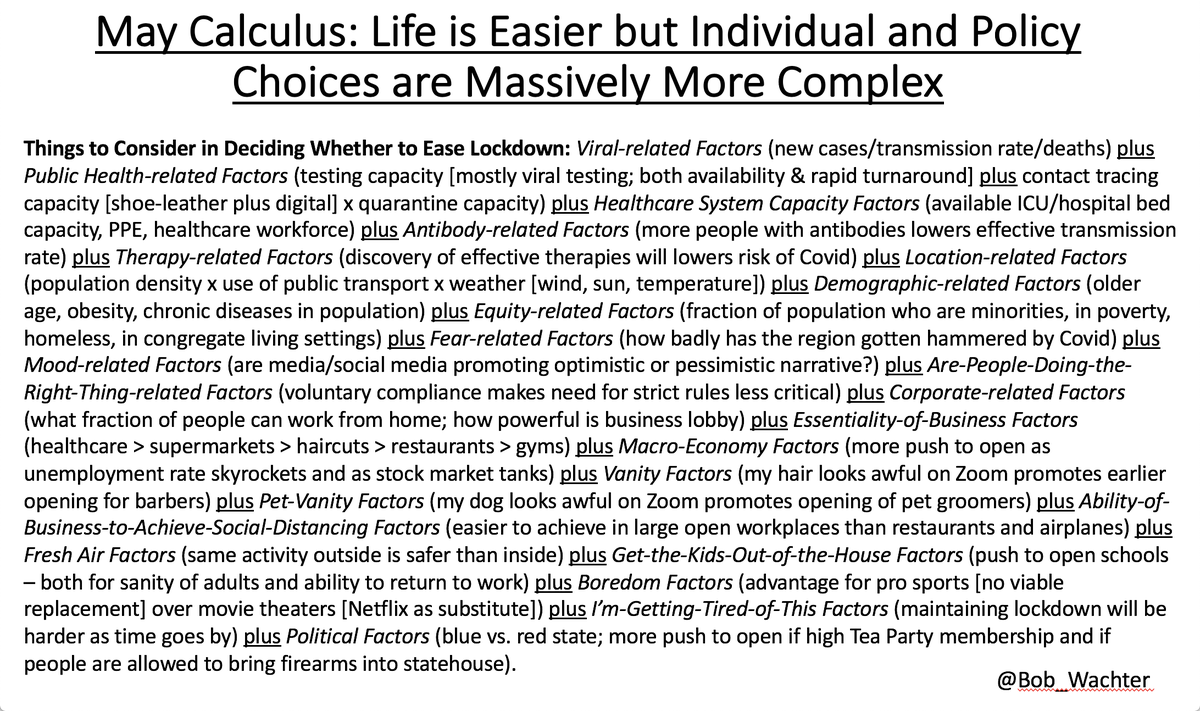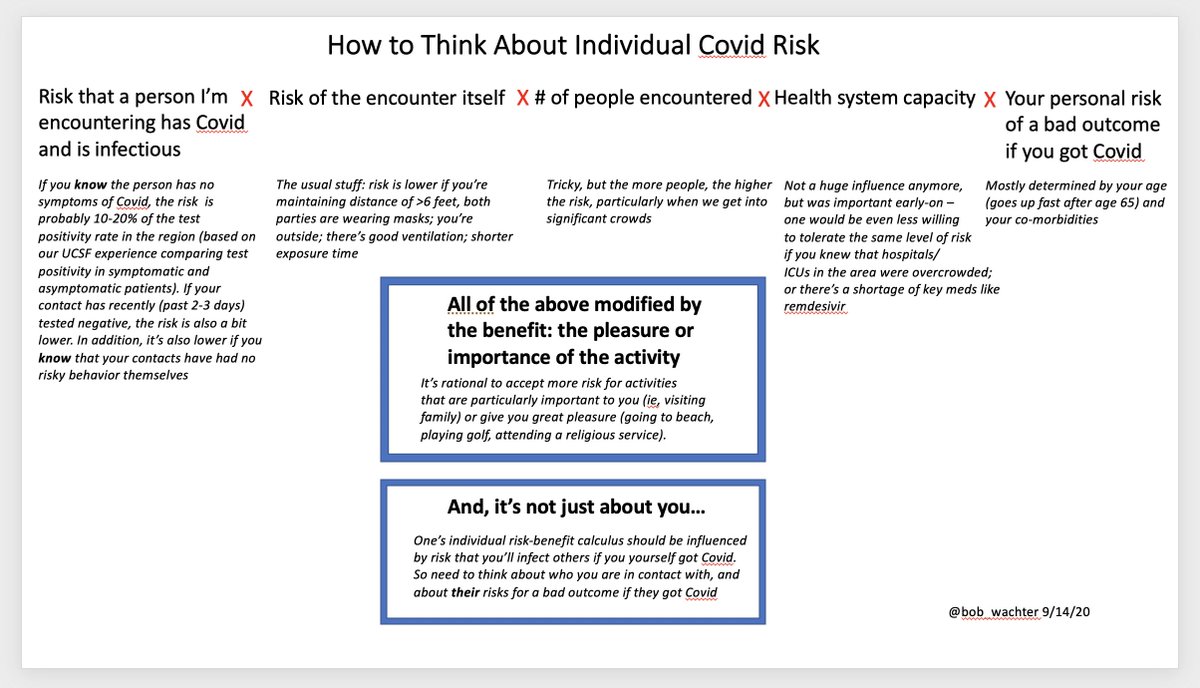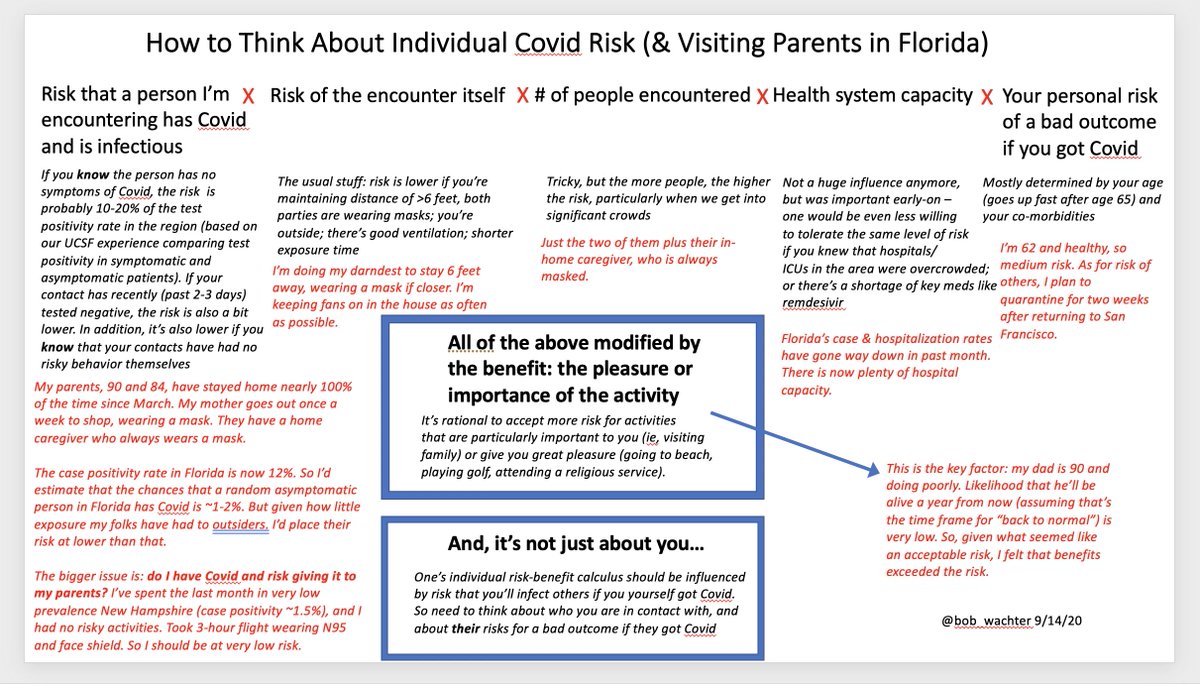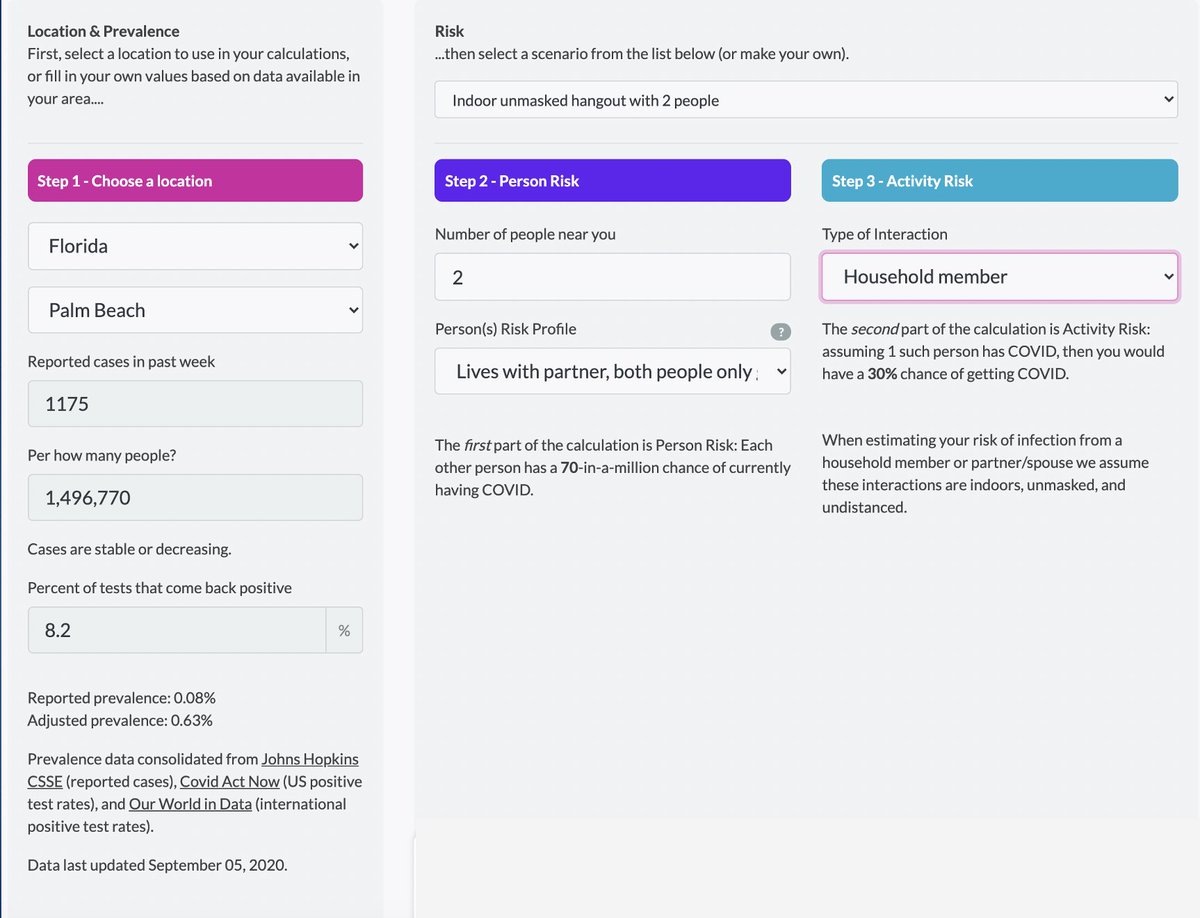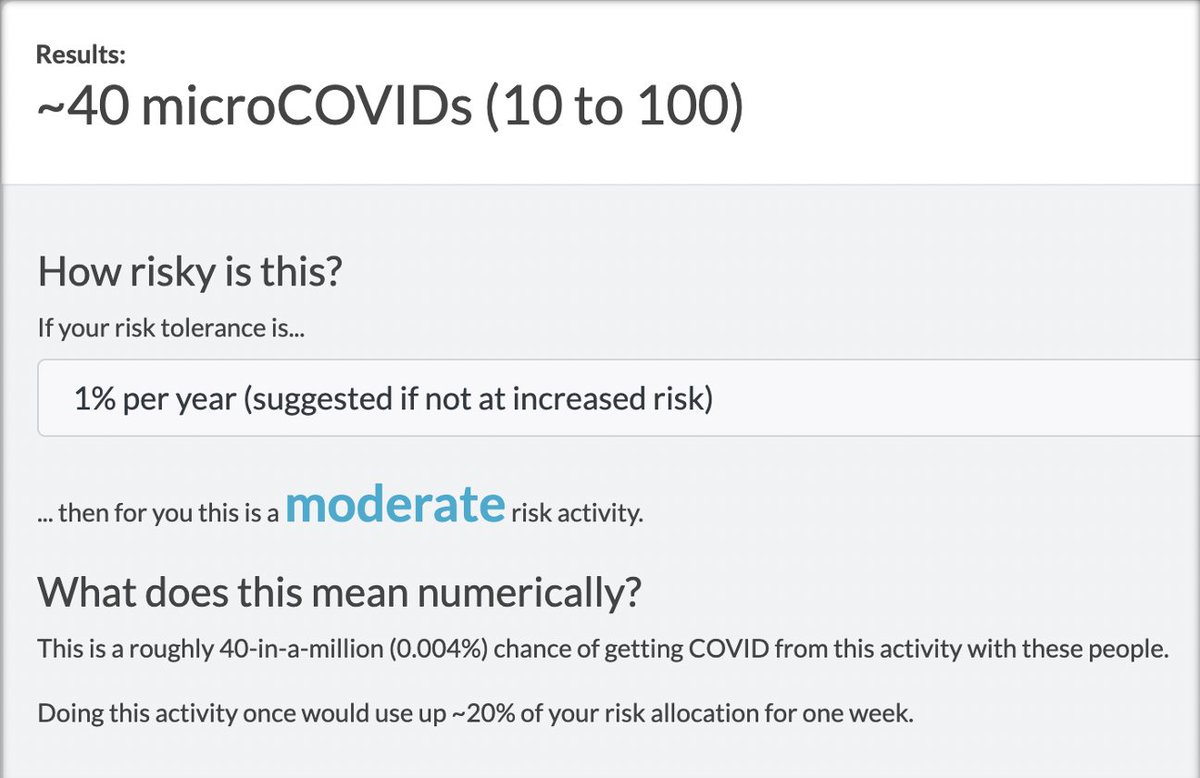1/ Covid ( @UCSF) Chronicles, Day 181
Today marks a half-year of Covid. We’re increasingly told that "it’s vital that we remain vigilant.” But what exactly does that mean?
So today: how to make sound decisions about risk in the face of uncertainty, longing, frustration & fear.
Today marks a half-year of Covid. We’re increasingly told that "it’s vital that we remain vigilant.” But what exactly does that mean?
So today: how to make sound decisions about risk in the face of uncertainty, longing, frustration & fear.
2/ I’m in Florida, where I’ve come to see my 90 & 84 year-old parents. Once I arrived I had to decide how to act with my frail mom & dad (pic: brief suspension of 6ft rule). I’ve been obsessing about whether to make the trip for months & recently decided to take the plunge. Why?
3/ I’m sure I’m not alone – all of us are having to make nuanced risk-benefit decisions re: Covid, nearly constantly. Do I see friends? Inside or outside? Visit family? Send my kids to school? Wear masks? It’s exhausting.
And, for 99% of us, this isn’t what we do for a living.
And, for 99% of us, this isn’t what we do for a living.
4/ The muzzling of the @CDCgov means there is precious little trusted guidance coming from what would otherwise be the usual source. Which leaves all of us even more on our own as we make dozens of daily decisions that are at once small and monumental.
5/ Not only do we lack trustworthy data from national sources, but one’s assessment of risk (e.g., of your kids going to school) & of the benefits of various interventions (e.g., masks) are colored by which political team you root for – another cost of today& #39;s political insanity.
6/ Before getting to risks, here& #39;s a quick local update: @UCSFHospitals, 30 pts, 7 on vents. Our asymptomatic test positivity is 0.75%.
San Francisco: 61 cases/d (Figure), 91 deaths total, 2% test positivity. 70 hospitalized patients. All these numbers are stable or improving.
San Francisco: 61 cases/d (Figure), 91 deaths total, 2% test positivity. 70 hospitalized patients. All these numbers are stable or improving.
7/ OK, on to decisions about risk. March-April was lockdown. Essential workers were out there, but for rest of us it was a time of obsessive hand-cleaning, wiping down groceries, adapting to ZoomWorld, & staying home. In the face of fear & uncertainty most of us sought zero risk.
8/ In retrospect, March & April were emotionally hard but cognitively easy. There were few decisions to make – the rules were simple & easy to remember.
But in May, policymakers had myriad decisions to make. My graphic below, from May 1, was an effort to capture the complexity.
But in May, policymakers had myriad decisions to make. My graphic below, from May 1, was an effort to capture the complexity.
9/ Once we began opening things up, now each of us had more leeway about how to manage our risks. Some people made decisions that were too risky, which partly explains the June-July surge that we saw in CA and elsewhere; I wrote about this @TheAtlantic https://tinyurl.com/ybaoq9yf ">https://tinyurl.com/ybaoq9yf&...
10/ But we also got smarter about assessing risks. We learned that outside was better than inside, that masks work quite well, and that fomites aren’t so bad. And we found a couple of therapies (remdesivir & steroids) that improved outcomes – not game-changers, but significantly.
11/ And hospitals & MDs also got better at Covid care – we learned about clotting, proning, “happy hypoxia,” and the non-pulmonary manifestations of the disease. We reorganized our healthcare systems and upped our capacity – beds, ventilators, PPE – to avoid being overwhelmed.
12/ Thankfully, the risk of dying from Covid fell.
But we also learned about the risk of prolonged symptoms and, even scarier, of ongoing cardiac & perhaps other organ damage – whose long-term prognosis is not yet known. This now needed to be factored into risk assessment.
But we also learned about the risk of prolonged symptoms and, even scarier, of ongoing cardiac & perhaps other organ damage – whose long-term prognosis is not yet known. This now needed to be factored into risk assessment.
13/ Humans stink at weighing risk. How many of us know the risk of drowning while swimming is ~100x that of dying in a shark attack? And that drive to/from the beach is more likely to kill than a shark https://tinyurl.com/zx2x66n ">https://tinyurl.com/zx2x66n&q... Our brains were not built to process dread rationally.
14/ Data helps, and we now have far more data to inform Covid-related decisions than we did in May. For example, one study found that, with an open middle seat & everyone masked, risk of getting Covid on a 2-hr flight is 1/7,700. Risk of dying = ~1/500,000 https://tinyurl.com/y5578mg9 ">https://tinyurl.com/y5578mg9&...
15/ Data like this can help us make more rational choices. My sister, who desperately wanted to see our parents, considered renting an RV & driving from CA to Florida. Chances of dying while driving 6,000 miles (round trip) is ~1/15,000. Even with Covid risk, flying is far safer.
16/ How do we think semi-rationally about risk, quieting the primitive part of our brains that overweighs shark attacks & underweighs the risk of driving? It’s key that we do this: even if all goes well in vaccine tests, we have at least 9 more mths before we’re “back to normal.”
17/ In the graphic, I show how I evaluate the risk of individual activities: the risk the contact has Covid x the risk of the encounter x the number of people contacted x healthcare capacity x personal risk… all tempered by the benefit of the activity & the risk to 3rd parties.
18/ In revised figure below, I’ve added (in red) how I analyzed the decision about whether to visit my parents in Florida this week. (My dad& #39;s not doing well, so a long delay seemed quite risky.) I show you this in the hope that it might help you w/ a similarly weighty decision.
19/ If you’d like to hear more about the incredibly complex, and fascinating, issue of how to weigh risks and benefits in Covid, take an hour to listen to this conversation between @ezraklein @voxdotcom and Harvard epidemiologist @JuliaLMarcus https://tinyurl.com/y39r69g2 ">https://tinyurl.com/y39r69g2&... It& #39;s superb.
20/ Perhaps the most interesting part of the podcast was the emphasis on not just risk but also benefit; and the degree to which we seem to, in Marcus’s words, “stigmatize pleasure.” Klein added, “The more you try to be absolutist, the more you set yourself up for a fall.”
21/ I& #39;m reminded of dieting and exercise: to succeed long-term, you need to find a regimen you can live with, not a quick but unsustainable win. We simply have too many months of Covid ahead of us to stick with a notion that zero risk is the only acceptable – and moral – target.
22/ Want more help? The microCOVID Project https://www.microcovid.org/ ">https://www.microcovid.org/">... has an awesome online calculator that takes in key inputs (including constantly updated local prevalence stats) & produces a risk estimate for various activities (including flying, eating out, etc).
23/ I plugged in my Florida visit & microCOVID came up with the calculations below – my estimated risk of getting Covid was 40 in a million (or 1 in 25,000). Though not zero, it seemed worth it to see my folks.
Check out the site – it’ll help you make more rational choices.
Check out the site – it’ll help you make more rational choices.
24/ A heartfelt thanks to the Twitter community for all the lovely comments about my dad after my tweet yesterday https://twitter.com/Bob_Wachter/status/1305151562784800772.">https://twitter.com/Bob_Wacht... While Twitter has many dark corners, I’ve been more often floored by people’s generosity and warmth.
25/ I’ll be back Thursday with @UCSF grand rounds: all about vaccines. Speakers: @PeterHotez, Jamie Sepulveda & @ProfHeidiLarson. Should be fascinating. I’ll post the conference Thursday pm along with my summary tweets.
Till then, make good decisions, and stay safe and sane.
Till then, make good decisions, and stay safe and sane.

 Read on Twitter
Read on Twitter
